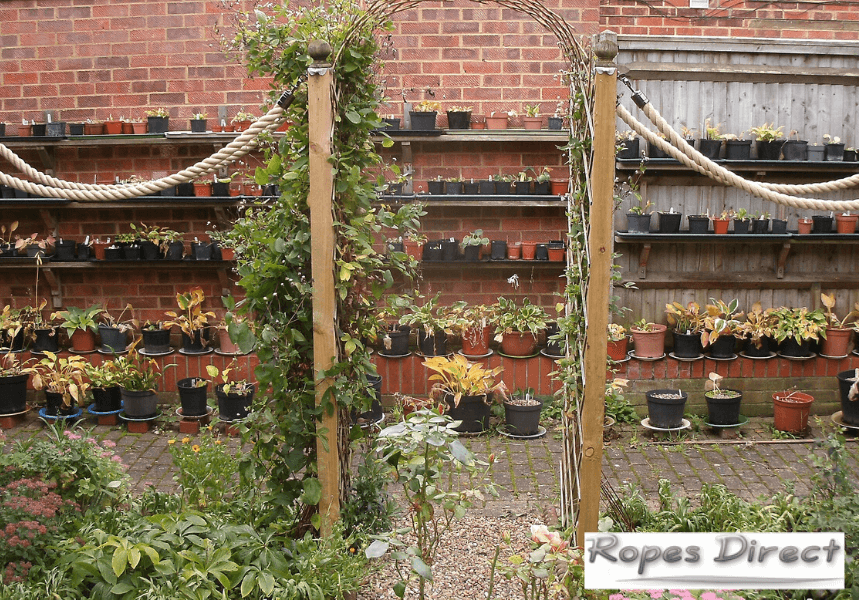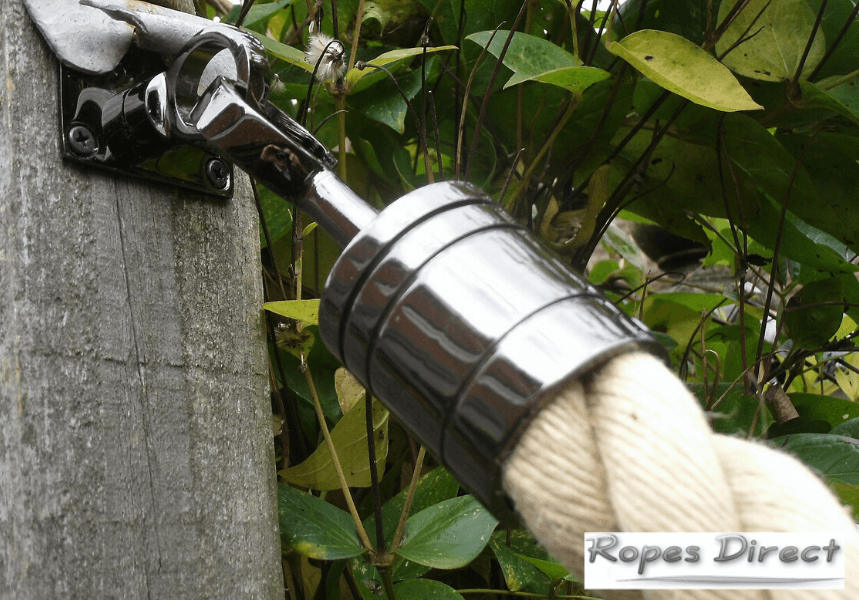Want to build a rope fence in your garden?
Garden rope fences are a great way to add a decorative touch to your outdoor space. But they can also be very practical. For example, they can be used to divide areas of the garden, perhaps creating a safety boundary around decking or separating your patio area from the home allotment.
And the best bit? They’re really quick and easy to build. Take a look at this fantastic DIY garden rope fence – made by our customer, Jonathan. We love to see where our ropes go and how they look in situ, so we were thrilled to receive these photos. Made from 36mm synthetic hemp and fitted with black nickel hooks and eye plates, we think you’ll agree, they look very impressive.

If you’re looking for a way to keep busy and fancy having a go at making your own – simply order your materials today and follow our beginner’s guide on how to build a rope fence.
It’s easy to measure how much rope you need – we have put a simple-to-follow diagram at the bottom of this page.
5 steps to make an impressive garden rope and post fence
-
Prepare the area
Firstly, you need to decide where you would like the garden rope fence to go.
One of the easiest ways to do this is by using two thin wooden stakes. Tie these together using a length of string and push them into the ground to mark out the desired beginning and endpoint of your new fence. If left in place, this string will help you to fit the rope posts in a straight line.
At this stage, you should also determine a suitable distance between each rope post. This distance will depend on the fence’s overall length and your personal preferences. But, for most projects, we recommend leaving approximately 1-2 metres between each. Measure the gaps carefully, taking care to follow the string, and mark out each location with spray paint.
-
Dig the holes
You’re now ready to start digging.
To make the job as easy as possible, we suggest using a hand-held post hole digger. But, if you don’t have one of these at home, a simple spade will work just as well. Start at the first wooden stake and dig into the ground. Typically, you should aim to create a hole around 12 inches deep and two inches wider than your post. But keep in mind, for taller posts, you may have to dig slightly deeper.
Repeat the process until all post holes have been created. Then – to allow effective water-drainage and help prevent rot – it’s a good idea to place a little gravel into the bottom of each.
-
Add the rope posts
Now the ground has been fully prepared, it’s time to start building your rope fence.
Lower a post slowly into the first hole, making sure it’s as straight as possible. Once you’re happy with its position, fill the hole (to ground level) with the soil that was previously removed – and use a hand tamper to pack it down. All posts should be installed and secured in the same way.
We advise you wait for your rope to arrive before cutting or drilling posts etc, because rope can vary in diameter ever so slightly. And if you are feeding rope through a post, you should always drill a much larger hole – for example to feed a 32mm decking rope through a post, we would drill a 36mm hole, otherwise the rope will ‘bunch’ up as you try to feed it through.
-
Attach the rope
The next step is to attach the rope to the rope posts – and this can be done in a number of ways.
One of the most popular is by using metal rope fittings. This was the method employed by Jonathan and, as you can see, it creates a highly professional and attractive finish. Simply screw an eye plate into the top of each wooden post and attach the rope using a matching rope end hook.

Alternatively, you could drill holes into the posts and thread the rope through. Or – to create a rustic, nautical rope fence – simply tie it in place using an overhand knot or clove hitch.
Whichever technique you choose for your rope fence, be sure to continue with that technique throughout the design and keep the same amount of rope slack between each post.
-
Do the final checks
Lastly, you need to check that everything is sturdy and secure. The rope posts shouldn’t wobble when touched; but if they do, simply add more soil to the hole and make sure it’s compacted down as much as possible. For rope fences that have been threaded or tied with knots, it’s also a good idea to secure them in place (and ensure they won’t unravel) by using nails or screws.
Start building your garden rope fence today
Compared to other types of garden partition, a decorative rope fence is relatively easy to make. And, thanks to our handy step-by-step guide, you can have it up-and-running in no time – creating a pleasant space for you and the family to enjoy this summer. So, what are you waiting for?
Here at Ropes Direct, we have a range of decking ropes that are perfect for this type of project – including synthetic hemp, jute, manila and more. These are all designed for outdoor use and available for a competitive price. To determine how much you need, use a piece string to plan out the rope fence – creating the desired ‘drape’ from post to post – and then simply measure the string.
We also stock a fantastic range of rope end hooks and eye plates. Just choose your favourites and we’ll deliver them to your home address in a matter of days.
If you have any questions about the products available, or would like further advice on how to build a garden rope fence, you’re also welcome to get in touch. Send an email to info@ropesdirect.co.uk or call 01692 671721 and we’ll get back to you as soon as possible.


